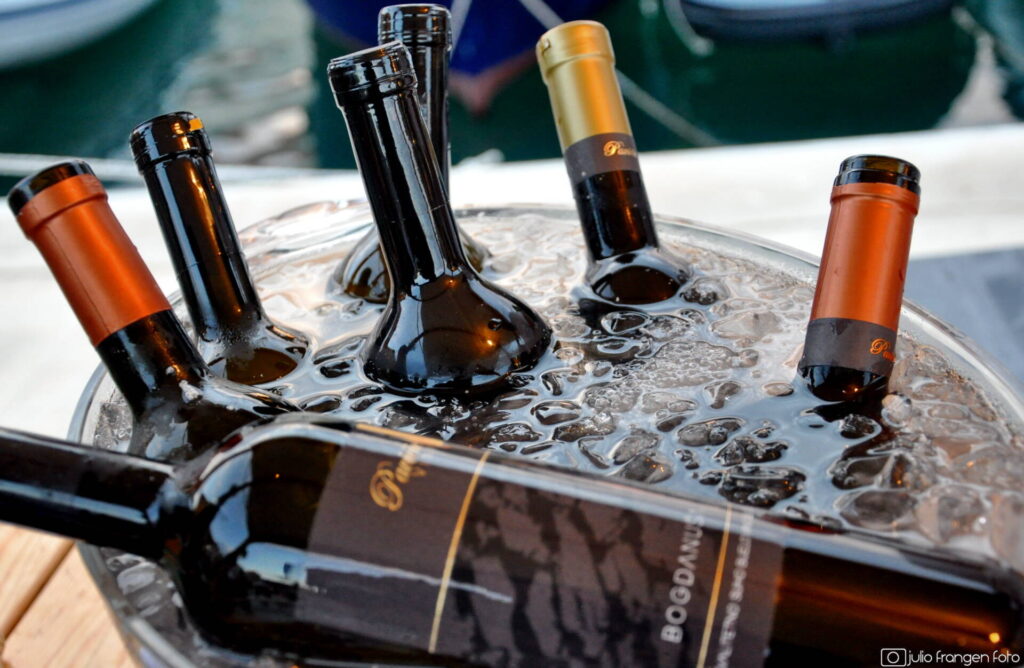
Prošek – A Sweet Dessert Wine
The history of Prošek dates back a long way. The first written mention of this fine sweet drink was in Petar Hektorović’s ‘On Fishing and Fishermen’s Tales’ (1566), where he describes how it was used in preparing paprenjoki, the traditional slightly spicy sweet biscuits which are a Stari Grad speciality. Later on, the Italian naturalist and traveller Alberto Fortis described the drink, which he mistakenly called Prosecco vecchio when he came across it in Almissa [modern Omiš], as “exquisite…worthy of any banquet” (‘Viaggio in Dalmazia’, 1774, p.99 – in Italian; p.258 in the 1778 English version ‘Travels into Dalmatia’).
Prošek is a Dalmatian dessert wine made in a particular way, differently from wine, using a combination of grape varieties. It is usually made from the white grapes bogdanuša and maraština, often with the addition of the red plavac mali grapes. The grapes are allowed to ripen fully and dried using the ‘passito’ method, where they are laid on straw or plastic mats to dry naturally in the sun for about a week. This concentrates the grape juice and raises the sugar content. After drying, the grapes are matured in wooden barrels.
To qualify as a dessert wine, the alcohol level has to be 15% at the least. It takes about seven times as many grapes as it would to produce the same volume of wine, so it costs more per bottle than wine, especially if it is a top quality prošek.

Fortis used the term ‘prosecco’ when he should have said ‘prošek’. The Italian sparkling wine of that name is completely different from prošek in every way. Prosecco is a DOC (Controlled Denomination of Origin) wine and comes from a specific region in northern Italy, having originated from a village of that name. It is made from prosecco (also called gera) grapes, although a certain amount of blending is allowed under EU rules. Prosecco is not a dessert wine. Because of the opposition of Italian Prosecco producers, there is ongoing debate in the European Union as to whether to allow the continued use of the name Prošek.
Croatian Prošek is best served chilled between 12° and 16° C, and goes well with desserts or mature cheeses.






